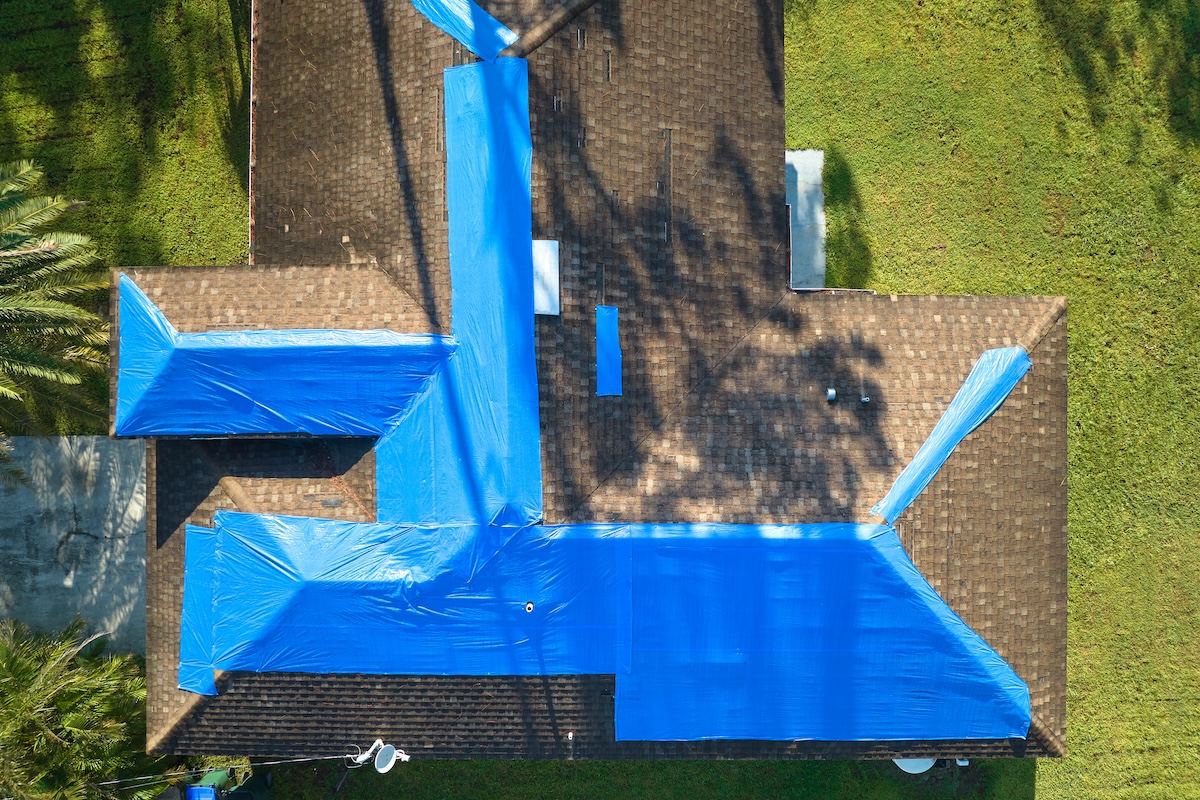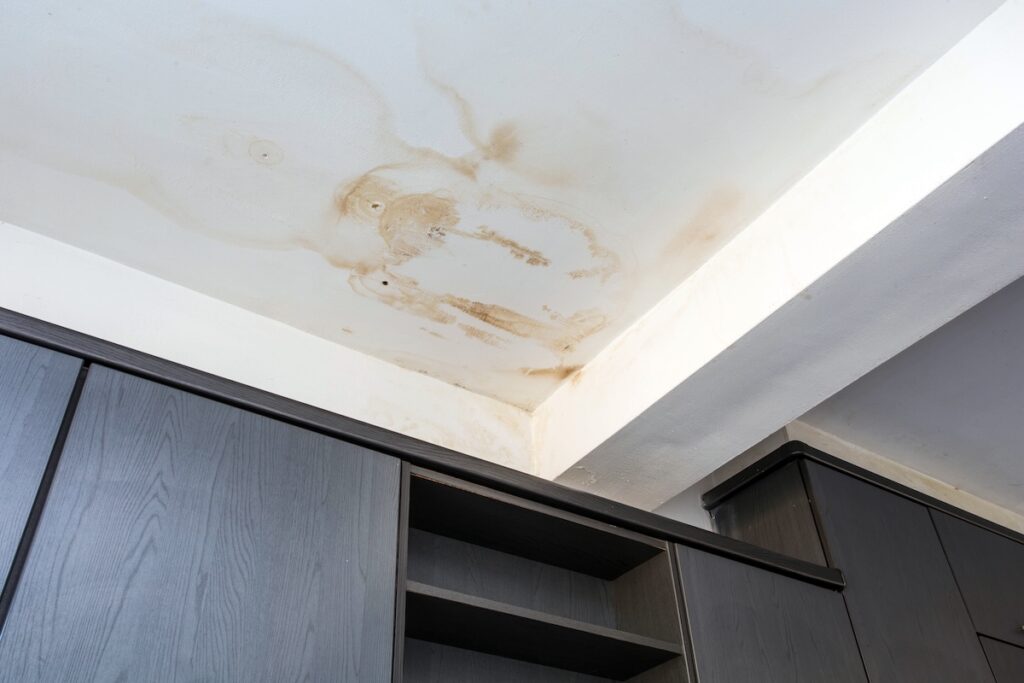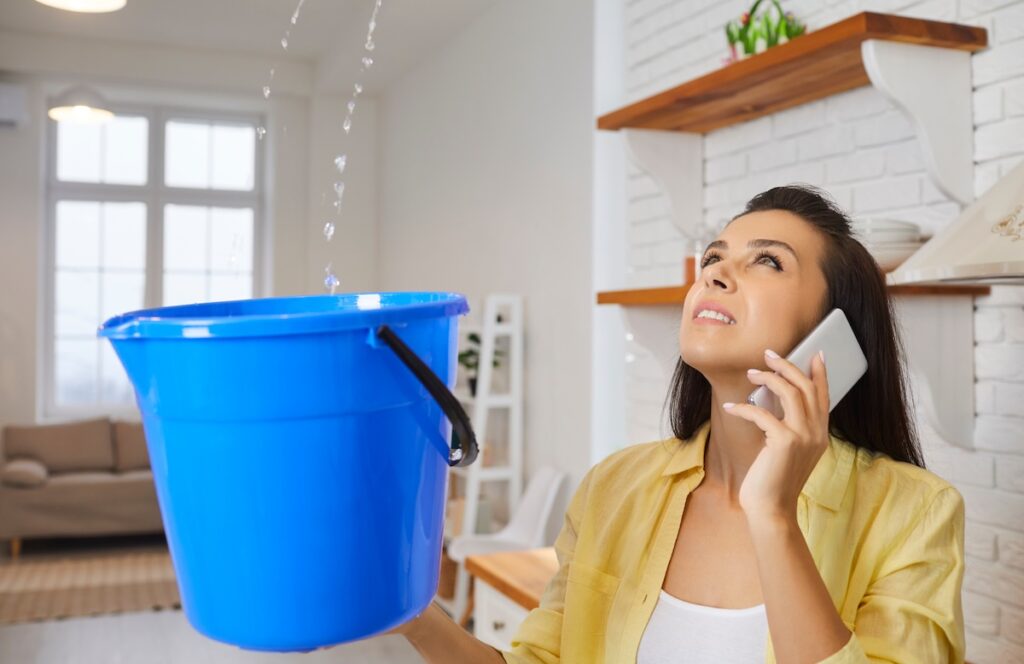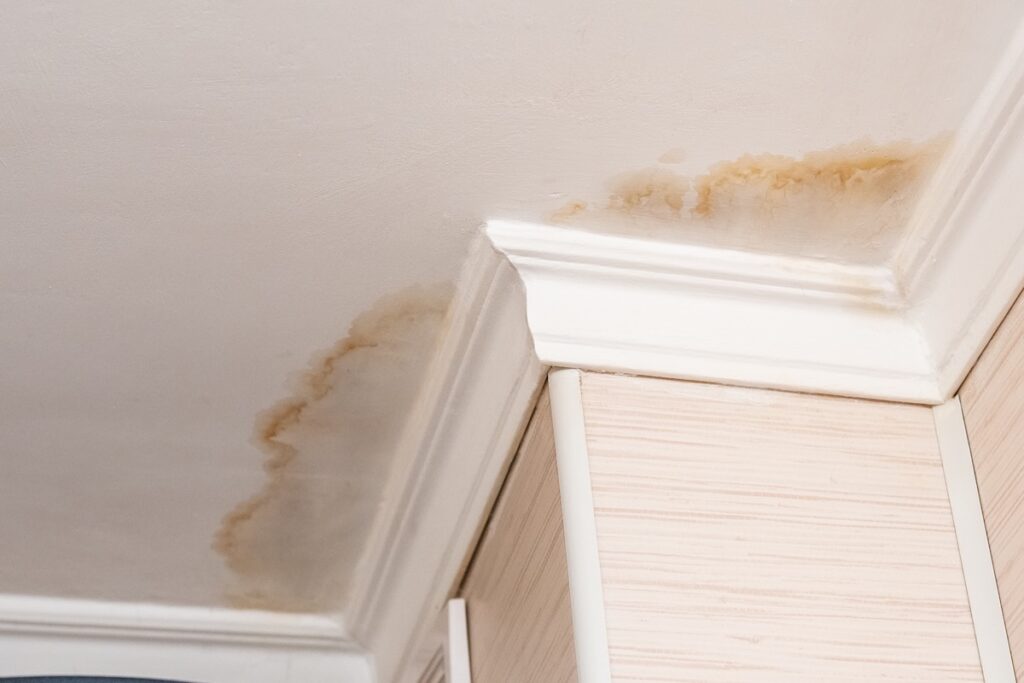

How to Find a Roof Leak Fast (Before It Gets Worse)
Posted June 26th, 2025 | 7 min. Read
Roof leaks are more than a minor inconvenience; left unchecked, they can lead to extensive damage to your roof and home. From water-stained ceilings to mold and structural issues, the costs of ignoring a leak can skyrocket. The good news? You can quickly identify and address the problem before it gets worse.
This guide will walk you through how to find a roof leak fast and ensure a proactive approach to protecting your home. Here’s what we’ll cover:
- The telltale signs of a roof leak
- Step-by-step instructions to locate a roof leak
- Common causes of roof leaks
⭐️ Common Signs of a Roof Leak

Before actively searching for a leak, learn the signs that indicate moisture intrusion. Some of the most common include:
Interior Signs:
- Water Stains: Brownish water rings on ceilings or walls are a telltale sign.
- Dripping Water: Obvious evidence, especially during or after rain.
- Peeling Paint or Wallpaper: Moisture can cause interior paint to bubble or wallpaper adhesion to fail.
- Mold or Mildew Smells: Persistent damp odors often accompany leaks.
- Sagging Ceilings: Advanced leaking can weaken areas of the ceiling.
Exterior Signs:
- Missing or Damaged Shingles: Broken or missing shingles leave your roof vulnerable.
- Water Pooling: Standing water could indicate poor drainage.
- Rust or Rot on Flashing: This critical element seals vulnerable roof intersections like chimneys and vents, and damage could allow water entry.
✅ 7 Steps to Locate a Roof Leak

Here’s a step-by-step approach to help you find the source of your roof leak:
1. Inspect Inside for Signs of Damage
Start your inspection indoors. Look for clear symptoms like water stains on walls or ceilings, damp areas, or peeling paint. Pay close attention to corners, around windows, and places where walls meet the ceiling. Use a flashlight to carefully examine dark areas where small drips or discolorations might be harder to spot. Any signs of moisture indoors could indicate a roof leak that needs attention.
2. Check Your Attic Thoroughly
Your attic can reveal a lot about the state of your roof. Head up to perform a detailed inspection. Look for discolored or water-stained wood and damp or moldy insulation. If it’s raining, check for active drips or water pooling on the attic floor. If it’s sunny, see if light is shining through any holes in the roof. These signs often point directly to problem areas on your roof that need repair.
3. Examine Vulnerable Roof Features
Leaks are more likely to occur around specific areas of your roof where materials meet or water tends to collect. Pay attention to:
- Flashings: Inspect the seals around chimneys, skylights, vents, and other roof penetrations for cracks or gaps.
- Valleys: Check where two roof sections meet, as these areas can funnel water and are prone to leaks.
- Roof Edges: Gutter edges, overhangs, and eaves often deal with pooling water. Look for signs of damage, rot, or wear in these spots.
4. Simulate a Rainstorm
If you’re unable to pinpoint the leak, create your own rainstorm to help locate it. Have someone spray your roof with a hose while you remain inside, watching for drips or water stains to appear. Move the hose systematically across sections of the roof, allowing you to isolate the location of any leak. This method can help you identify problem areas that aren’t immediately visible during a dry inspection.
5. Inspect Shingles and Gutters Closely
Head outside to examine your roof’s surface and drainage system. Inspect for:
- Damaged Shingles: Cracked, curled, or missing shingles can expose your roof to water damage.
- Loose Materials: Check for gaps or damage around pipes, vents, and other roof structures.
- Blocked Gutters: Ensure your gutters are clear of debris like leaves or dirt, which can block proper drainage and lead to water pooling. Properly functioning gutters are essential for preventing leaks.
6. Spot Issues on Flat Roofs
Flat roofs require special attention because they are more prone to water pooling. Walk carefully across the roof and look for wrinkles, bubbles, or visible cracks in the roof membrane. Pooling water can cause damage over time, so note any areas where water collects and fails to drain properly.
7. Document the Problem
Once you’ve identified the issue, take detailed photos and notes. Capture the damage from different angles and include any signs of leaks inside or outside your home. This documentation will help when consulting with roofing professionals, filing insurance claims, or deciding on DIY repairs. Being thorough with your records ensures better communication and faster solutions.
🔎 Common Causes of Roof Leaks

Understanding the root cause will help you make informed decisions about repairs. Here are some usual suspects for roof leaks:
Worn or Damaged Flashing
Flashing is essential for sealing edges, joints, and transitions on your roof, such as chimneys, skylights, and vents. Over time, exposure to harsh weather, temperature changes, and general wear and tear can cause flashing to corrode, crack, or warp. When this happens, water can seep into these vulnerable areas, leading to leaks and potential water damage inside your home. Regular inspections and timely repairs can help prevent this issue.
Broken or Missing Shingles
Shingles act as a protective barrier for your roof, but they’re not immune to damage. High winds, hailstorms, and the natural aging process can cause shingles to crack, curl, or completely fall off. Missing shingles leave parts of the roof exposed to the weather, increasing the risk of leaks and structural damage. Replacing broken or missing shingles promptly can save you from more significant repairs down the line.
Clogged or Broken Gutters
Gutters play a key role in diverting rainwater away from your roof and home. When gutters become clogged with leaves, debris, or ice, water can back up and pool along the roof’s edges. This standing water can seep into the roof structure, causing leaks and water damage to the fascia and nearby areas. Regular gutter maintenance is crucial to keep water flowing away from your home.
Improper Roof Installation
A poorly installed roof can lead to problems much sooner than expected. Using low-quality materials or cutting corners during installation often results in gaps, misaligned shingles, or improper sealing. These flaws can cause leaks, even in a relatively new roof. Always hire experienced and reputable roofing professionals to ensure proper installation and long-term durability.
Punctures
Your roof is vulnerable to punctures caused by falling branches, animals, or even heavy foot traffic. For example, maintenance workers walking on the roof without proper care can damage roofing materials, creating small holes or tears. These punctures may not seem like a big deal initially, but they can allow water to enter your home and cause significant damage over time. Addressing punctures quickly is key to preventing further complications.
Ice Dams
Ice dams are a common winter issue that occurs when melting snow refreezes at the edges of your roof. This creates a barrier of ice that traps water, preventing it from draining properly. The trapped water can then seep under the shingles and into your roof, causing leaks and water damage to the interior of your home. Ensuring proper attic insulation and ventilation can help prevent ice dams from forming.
🏠 Finding Roof Leaks In Your Home
At Certified Roofing Solutions, we understand that finding and fixing a roof leak can feel like a daunting task. That’s why we’re here to make the process as seamless and stress-free as possible. With decades of experience, a commitment to quality craftsmanship, and a dedication to exceptional customer service, our team is the trusted choice for all your roofing needs.
Don’t let a small leak turn into a big problem—schedule an inspection with us today and let our experts protect your home and your peace of mind. Contact Certified Roofing Solutions now for prompt, reliable service!

